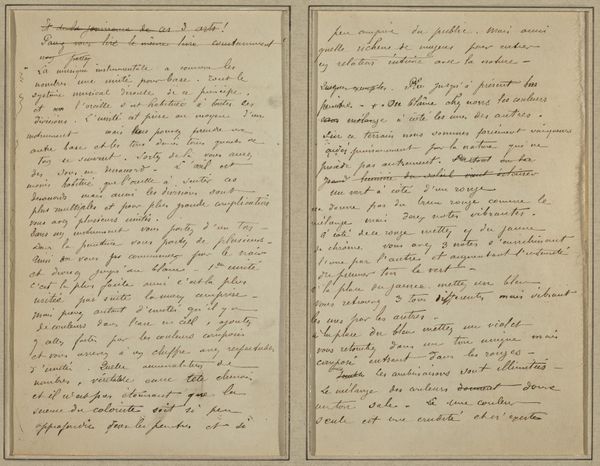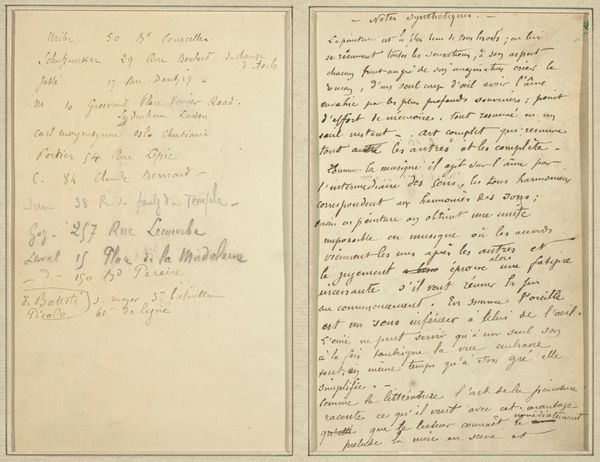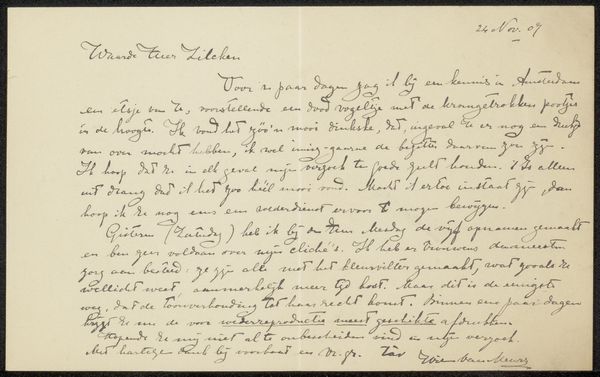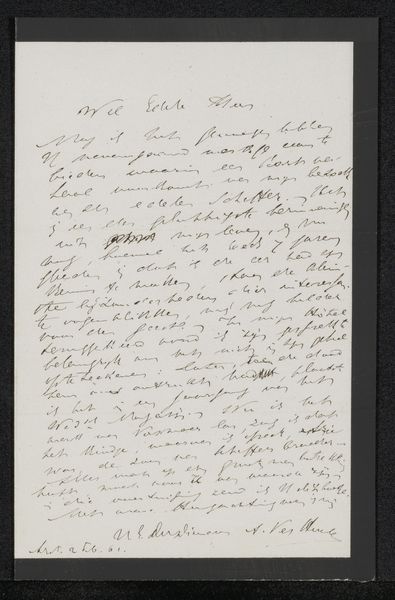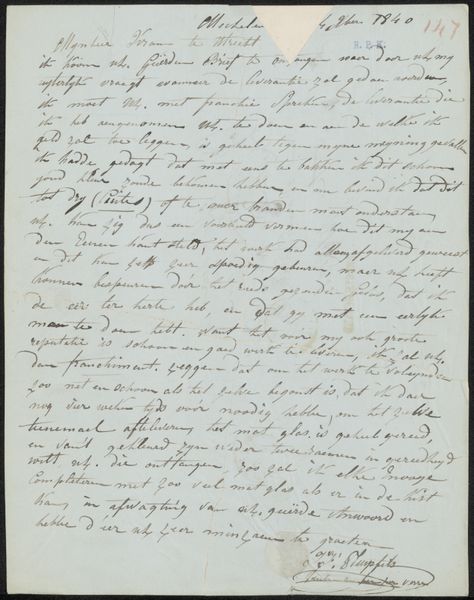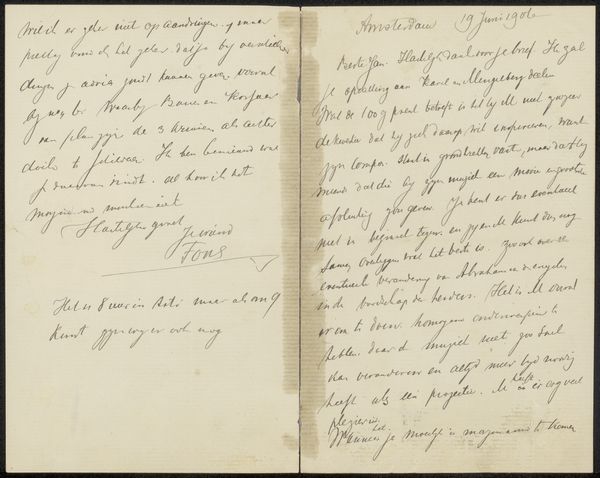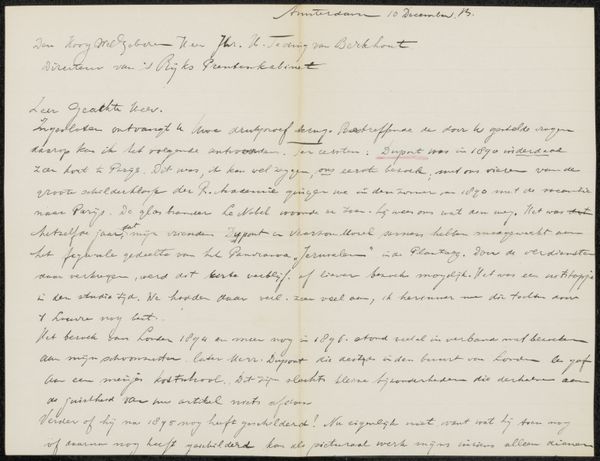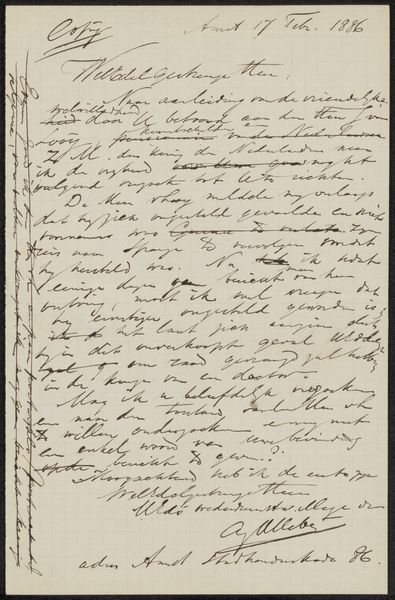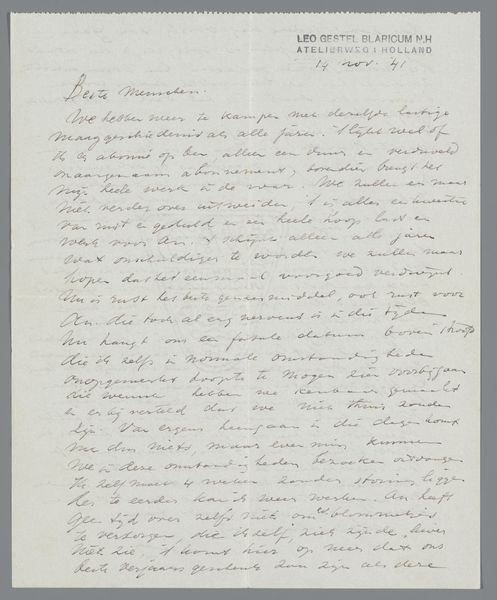![Manuscript Pages [verso] by Paul Gauguin](/_next/image?url=https%3A%2F%2Fd2w8kbdekdi1gv.cloudfront.net%2FeyJidWNrZXQiOiAiYXJ0ZXJhLWltYWdlcy1idWNrZXQiLCAia2V5IjogImFydHdvcmtzL2E3M2FjMThhLTg2ZDgtNDc5Yy1hMjUzLWZhZDYxNmY0ZDRkYS9hNzNhYzE4YS04NmQ4LTQ3OWMtYTI1My1mYWQ2MTZmNGQ0ZGFfZnVsbC5qcGciLCAiZWRpdHMiOiB7InJlc2l6ZSI6IHsid2lkdGgiOiAxOTIwLCAiaGVpZ2h0IjogMTkyMCwgImZpdCI6ICJpbnNpZGUifX19&w=3840&q=75)
drawing, paper, ink, pen
#
drawing
#
aged paper
#
toned paper
#
sketch book
#
hand drawn type
#
paper
#
tea stained
#
personal sketchbook
#
ink
#
sketchwork
#
pen work
#
symbolism
#
sketchbook drawing
#
pen
#
post-impressionism
#
sketchbook art
Dimensions: overall: 16.9 x 22 cm (6 5/8 x 8 11/16 in.)
Copyright: National Gallery of Art: CC0 1.0
Curator: So, here we have "Manuscript Pages [verso]" by Paul Gauguin, created between 1884 and 1888. What strikes you most about this piece? Editor: Well, immediately, it reminds me of someone's private sketchbook. It feels incredibly intimate. I see dense text and some scattered sketches. I'm curious, how do you interpret Gauguin's intention behind creating these pages? Curator: That's a great observation about the intimacy. Think about the art world Gauguin was navigating. The late 19th century was a period of intense artistic and intellectual debate. Gauguin was reacting against academic traditions and the established art market. Editor: So this sketchbook was a way for him to develop and record those reactions? Curator: Precisely! These manuscript pages can be viewed as a space of freedom, a place outside the rigid structures of the Salon system. It's where he could experiment with ideas about color, form, and even the role of the artist in society. He's not just sketching; he's engaging in a written dialogue, almost a manifesto in progress. Note how the handwriting and drawings are intertwined. Does that signify anything to you? Editor: That makes a lot of sense, because the drawings, while seemingly simple, interact with the writing in an intricate manner. Were sketchbooks like these intended for an audience, or solely for the artist? Curator: That’s the crucial question, isn’t it? While some artists create sketchbooks with an eye towards future exhibition or sale, here, it seems like Gauguin is primarily writing to himself, solidifying his own artistic theories and rebelling against established norms. These were created to solidify his viewpoints. It's a raw and unfiltered expression of his artistic and intellectual journey. Editor: Seeing it in the context of art world politics definitely changes how I perceive the artwork. It seems a radical statement hidden in an intimate setting. Curator: Exactly. It reminds us that art isn't created in a vacuum. These pages highlight the vital intersection of art and cultural history. Editor: I never would have guessed all of this from what appears, at first, like an average sketchbook page! Thank you!
Comments
No comments
Be the first to comment and join the conversation on the ultimate creative platform.
